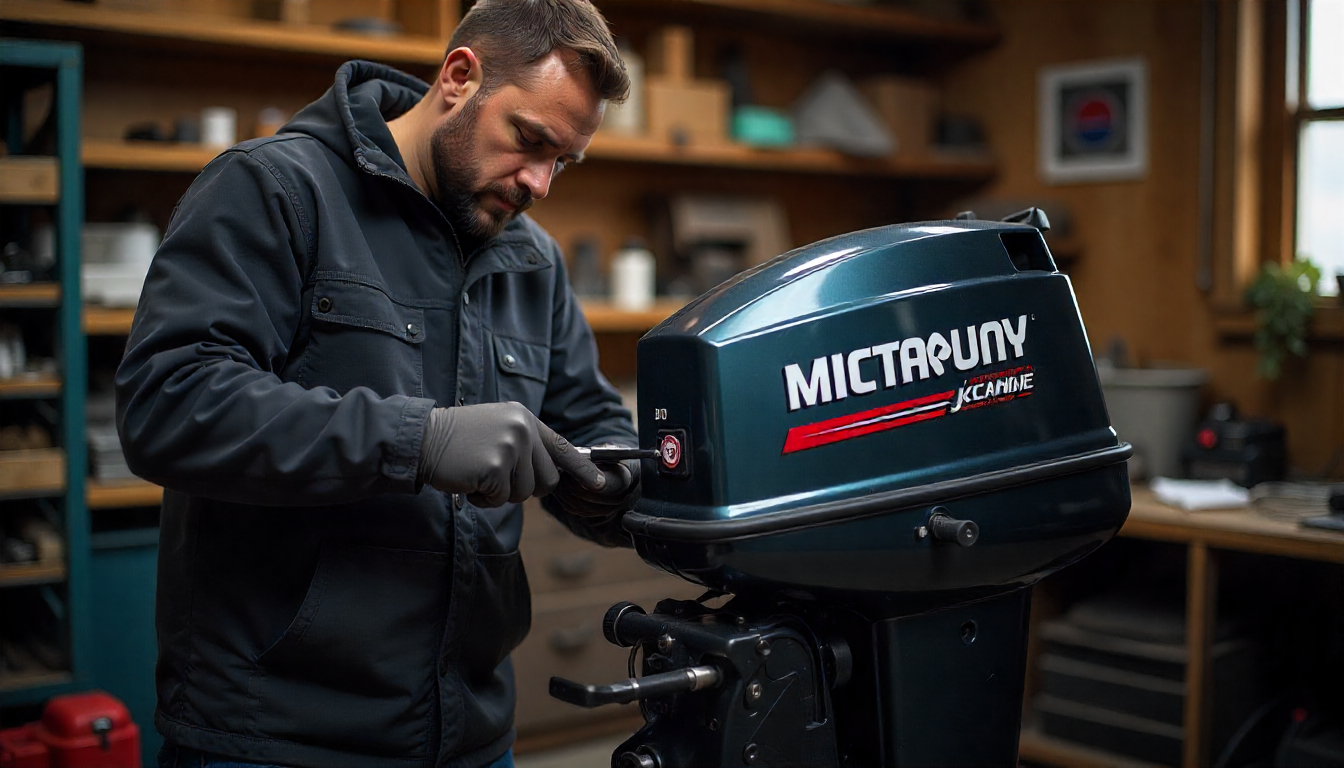When your boat motor stops functioning properly, a day on the water can turn into a frustrating experience. Knowing how to repair an outboard motor is a skill every boat owner should have. Whether you’re facing fuel issues, faulty spark plugs, or a blocked fuel filter, understanding basic maintenance and troubleshooting will save you time and money. This guide will walk you step-by-step through diagnosing and fixing the most common problems so you can get back on the water quickly.
Understanding the Basics Before You Repair an Outboard
Before you attempt to repair an outboard, you need to know the components involved. An outboard motor combines the engine, gearbox, and propeller into a single unit, mounted outside the boat. This design makes it easier to work on compared to inboard motors, but also means it’s exposed to the elements. Saltwater, debris, and poor fuel can lead to issues that require timely repair.
Key parts you should familiarize yourself with include the fuel system, spark plugs, fuel filter, water pump impeller, and electrical wiring. Learning how each part works will make it much easier to identify what’s wrong and how to fix it.
Tools You’ll Need to Repair an Outboard Motor
The right tools can make or break your repair efforts. At a minimum, you should have:
- Socket and torque wrenches
- Screwdrivers (Phillips and flathead)
- Spark plug socket
- Pliers and wire cutters
- Grease and lubricants
- Replacement spark plugs and a spare fuel filter
- A container for draining fuel
- Safety gloves and glasses
Having these on hand will allow you to quickly repair an outboard whether the problem is mechanical or related to the fuel system.
Step 1: Diagnose the Problem
The first thing you should do when your outboard motor starts acting up is pinpoint the issue. Common signs include difficulty starting, loss of power, excessive smoke, or unusual noises. Many problems can be traced back to the fuel system or spark plugs.
- If the motor won’t start at all, check for spark and fuel delivery.
- If it starts but stalls, look for clogged fuel filters or fouled spark plugs.
- If it runs rough, inspect both the plugs and carburetor.
Repair an outboard effectively by starting with the simplest possible causes before moving on to more complex ones.
Step 2: Inspect the Fuel System
A faulty fuel system is one of the leading causes of outboard motor trouble. Old or contaminated fuel, damaged hoses, or a blocked fuel filter can all prevent proper operation.
- Check the fuel tank – Make sure it’s filled with fresh fuel and not contaminated with water or debris.
- Inspect fuel lines – Look for cracks, leaks, or kinks that could interrupt flow.
- Replace the fuel filter – If the filter is clogged, swap it out immediately. Keep spare fuel filters on board for emergencies.
- Examine the carburetor – Dirt and varnish buildup may require a carb rebuild to restore performance.
Taking the time to repair an outboard by properly servicing its fuel system ensures smoother operation and extends the motor’s lifespan.
Step 3: Replace or Clean Spark Plugs
Spark plugs play a vital role in ignition. Worn or fouled plugs can cause misfires, rough running, and poor fuel efficiency.
- Remove each spark plug using a spark plug socket.
- Inspect them for signs of fouling, oil deposits, or corrosion.
- If they’re dirty but otherwise intact, clean them with a wire brush.
- If they’re worn or damaged, replace them immediately.
Keeping spare spark plugs on your boat is a smart way to be prepared for unexpected failures. Remember, clean and properly gapped plugs are essential for a well-functioning outboard motor.
Step 4: Check the Cooling System
Overheating is a serious issue that can cause permanent damage. The impeller in your water pump is the heart of the cooling system, pulling water from the lake or sea to cool the motor.
- Inspect the water intake for blockages.
- If water flow is weak, replace the impeller.
- Check hoses for leaks or damage.
Regular cooling system maintenance is one of the most effective ways to repair an outboard and keep it operating efficiently for a long time.
Step 5: Electrical and Battery Checks
Electrical issues can mimic fuel or mechanical problems. If your motor won’t start or has intermittent power loss, inspect the battery and wiring.
- Ensure the battery is fully charged and connections are clean.
- Look for frayed wires, loose connectors, or corrosion.
- Test ignition coils if spark plugs aren’t firing properly.
Repairing electrical issues promptly prevents further complications and ensures reliable operation.
Preventative Maintenance Tips
Repairing an outboard is important, but preventing problems in the first place is even better. Here’s how:
- Use only fresh fuel and stabilize it if storing the boat for extended periods.
- 점화 플러그와 연료 필터를 정기적으로 교체하십시오.
- 바닷물에서 사용한 후에는 반드시 깨끗한 물로 모터를 세척하십시오.
- 움직이는 부품에 선박용 그리스를 바르십시오.
- 배기 시스템에 물이 들어가지 않도록 모터를 똑바로 세워 보관하십시오.
꾸준한 관리는 수리 필요성을 줄일 뿐만 아니라 선외기 모터가 오랫동안 지속되도록 보장합니다.
전문가의 도움을 받아야 할 때
많은 수리를 직접 할 수 있지만, 심각한 내부 손상이나 고급 전기 결함과 같은 일부 문제는 전문가가 처리하는 것이 가장 좋습니다. 위에 제시된 단계를 거쳤는데도 문제가 지속되면 인증된 해양 정비공에게 모터를 가져가십시오.
전문적인 서비스는 비용이 많이 들 수 있지만, 숨겨진 문제를 진단하고 작은 문제가 큰 실패로 이어지는 것을 막을 수 있습니다.
최종 생각
선외 모터 수리 방법을 배우면 보트 소유자는 일반적인 문제를 쉽게 처리할 수 있습니다. 연료 시스템, 점화 플러그, 냉각 시스템 및 전기 부품을 이해하면 대부분의 문제를 직접 해결할 수 있습니다.
잊지 마세요. 정기적인 유지 보수, 신속한 진단, 시기적절한 수리는 보트 모터를 원활하게 유지하는 비결입니다. 연료 필터 교체, 점화 플러그 청소, 기화기 재조립 등 지금 들이는 노력은 모터가 오랫동안 안정적으로 유지되도록 보장할 것입니다.

 선외 모터 수리 방법 – 일반적인 문제를 쉽게 해결하세요">
선외 모터 수리 방법 – 일반적인 문제를 쉽게 해결하세요">
